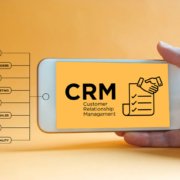The movie Funny Farm with Chevy Chase should be required viewing as part of senior living sales training. When Andy Farmer and his wife struggle to sell their country home after a not-so-idyllic experience of rural living, they decide to enlist the help of an eclectic cast of characters from the community. Everyone comes together to create the perfect experience for a hot lead with a “scheduled tour.”
Everything is planned down to the most minute detail: from ducks waddling along as prospects arrive to a deer prancing across the yard to the perfectly staged home setting and refreshments. It all unfolds perfectly with the help of the entire town!
Nothing is left to chance. The deer had been caged, and as the “prospects” arrived, Chevy Chase as Andy Farmer gave the command into his radio to waiting helpers to “cue the deer” at just the right moment.
Senior Living Sales Training: How to Create the Perfect Tour Experience
The couple that was “touring” was so taken by the experience. They offered more than the asking price and closed on the spot. And because everything was so perfect, they even wanted all of the furniture, dishes, and even the yellow dog.
A well-planned tour of a senior living community can have the same effect. People want to fall in love with a place that is the “perfect fit.” When this happens, there is less price sensitivity because the family sees and appreciates the value. I’ve had many situations where the family wants to purchase the entire model apartment because it is so warm and inviting!
Here are some quick tips for how your senior living sales team can create a “Cue The Deer” experience:
1. Do thorough discovery to learn about the prospect’s life story.
The more you know, the more personal of an experience you can create. Ask about interests, hobbies, careers, military service, favorite foods, books, movies, music, family, routines, “must haves” and “non-negotiables.”
For example, with my mother, the community must serve tea in a teapot. Heaven help the server who shows up with a tea bag in a cup and tries to pour water over it and call it “tea!”
2. Based on this information, plan the tour and use your team.
The team can execute some easy personal touches, such as having a welcome sign at the reception desk with the prospect’s name, having their favorite refreshments served in the hospitality room, or scheduling a favorite activity during the visit. You get the idea.
3. Have a personalized gift at the end of the tour – something especially for them.
Some common themes can be kept on hand (tea/ coffee lovers basket, dog/ cat lovers selections, photo books of local towns spiritual books/ journals, etc.). Others can be purchased prior to the visit if it is something specific (like the latest book by a favorite author).
4. Do things that your competitors are not doing!
For instance, put out a valet parking sign in advance of the tour. (If they can’t find a parking spot or have to park far away, you will have your first strike against you.) Meet the tour personally at the car – what a great first impression, right? Have umbrellas and wheelchairs handy. Have cold water on hot days. Serve refreshments in glassware & china, not Styrofoam and paper. Offer homemade goodies. And, finally, walk every visitor out to their car for the final personal touch.
We can help your sales and marketing teams create red carpet tours!
We can also turn your senior living website into a lead generation machine so that you have plenty of great leads to give tours to. Let’s chat about your needs!








